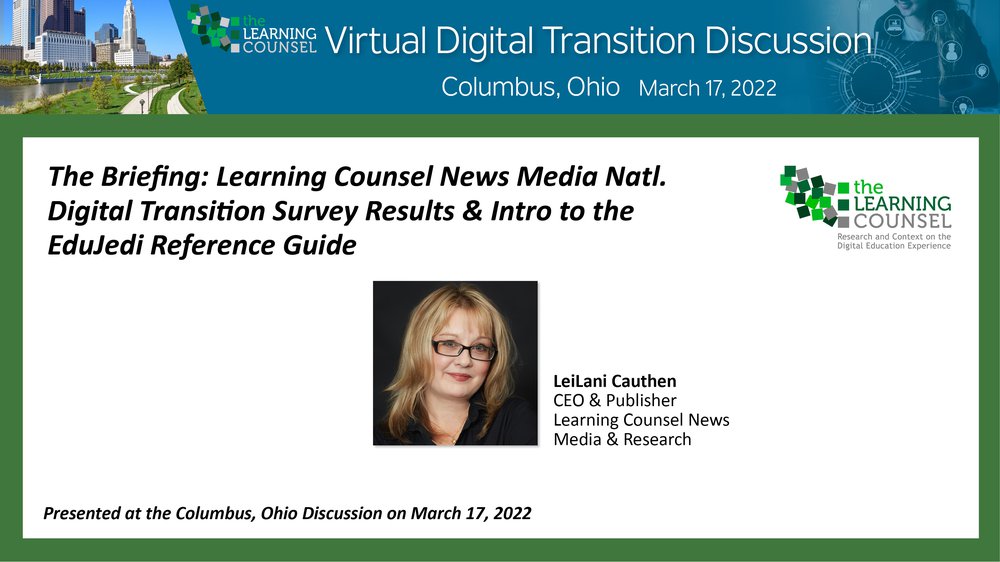If you have never seen one of LeiLani Cauthen’s Digital Transition Briefings, you are in for a treat. In this briefing, Cauthen shared some of the high points of the 2021 Digital Transition National Survey, the most comprehensive survey of its kind anywhere.
This year, the survey was divided into two sections, one for teachers and the other for education administrators. A total of more than 21,000 respondents answered the survey, adding incredible accuracy to the sample size.
According to Cauthen, “There's two big, huge problems on the horizon. One is you're losing students in traditional public education, so you start to think about ways you could maybe serve students in different ways with remote learning, hybrid learning, and fully online virtual schools that you stand up. Getting in more communication with the parents, which is maybe a parent camp over the summer, or you're offering high stakes testing to the homeschoolers, which allows you to count something at least depending on the state. Right? And the second biggest problem is you can't get the teachers.
So, you're looking at how you can provide service in different ways. And structure is a really big theme that we're going to go through with you today.
Running behind this is the next level stage. It starts out early, but really gets serious at this point for a lot of districts. And that is, how do we personalize for every learner? During the pandemic, parents and grandparents and students started shopping online and they found valuable curriculum that would really personalize to them. And one of the things they realized when they were looking at all this is that their school isn't doing it this way.
“You're looking at personalization from the lens of the manufacturing line of students by age batches in grades, in classes. And since the pandemic, that is no longer the way that personalization is truly defined by the average American. So, personalization starts to be a really huge conversation with a lot of ramifications. And then you discover that maybe there's something that could Uberize the personal pace of every student and make it so that they were automatically cohorted in their time of need. For the next point they would intersect with the teacher, that's a new emerging and disruptive technology. And the endpoint is really when the school or district is looking at more than the pace and path and the curriculum. They're looking at, how do we craft a fantastic experience for every individual student? So, now they're looking at things through that lens of experiential learning and they're using a lot more logistics now -- logistics as a whole theme overall is a new discussion point since the pandemic, because logistics got really difficult during the pandemic.”
Cauthen continued, “People are realizing now, even if they've tried to go back to normal, that there is no normal anymore. Parents are questioning everything, saying, ‘you know, when we were remote, we only had to have two hours of study a day and now the kid has to be in school all day. Could we change that up? Could we just not come on Fridays? Or, I'm going to go do something that's with grandma that's three hours away. And my kid's just going to log on, is that okay with you today?’
“When we asked the question, what pressures are you feeling? What surprised us was that administrators said time and space was their number one problem,” said Cauthen. “And then there's the student attrition problem, which is in the thousands for a lot of districts. And the teachers are echoing that in their own survey, citing student absences. A lot of times they tell us directly, ‘we can't fault the kids, they just don't show up on zoom or they don't show up live.’
In this video, Cauthen relays many of the top responses from the survey, but with the kind of explanation and analysis that is uniquely Cauthen. You’ll want to watch every moment of the briefing. It is one of the best ways on the planet to get up to speed on the state of education in America.










